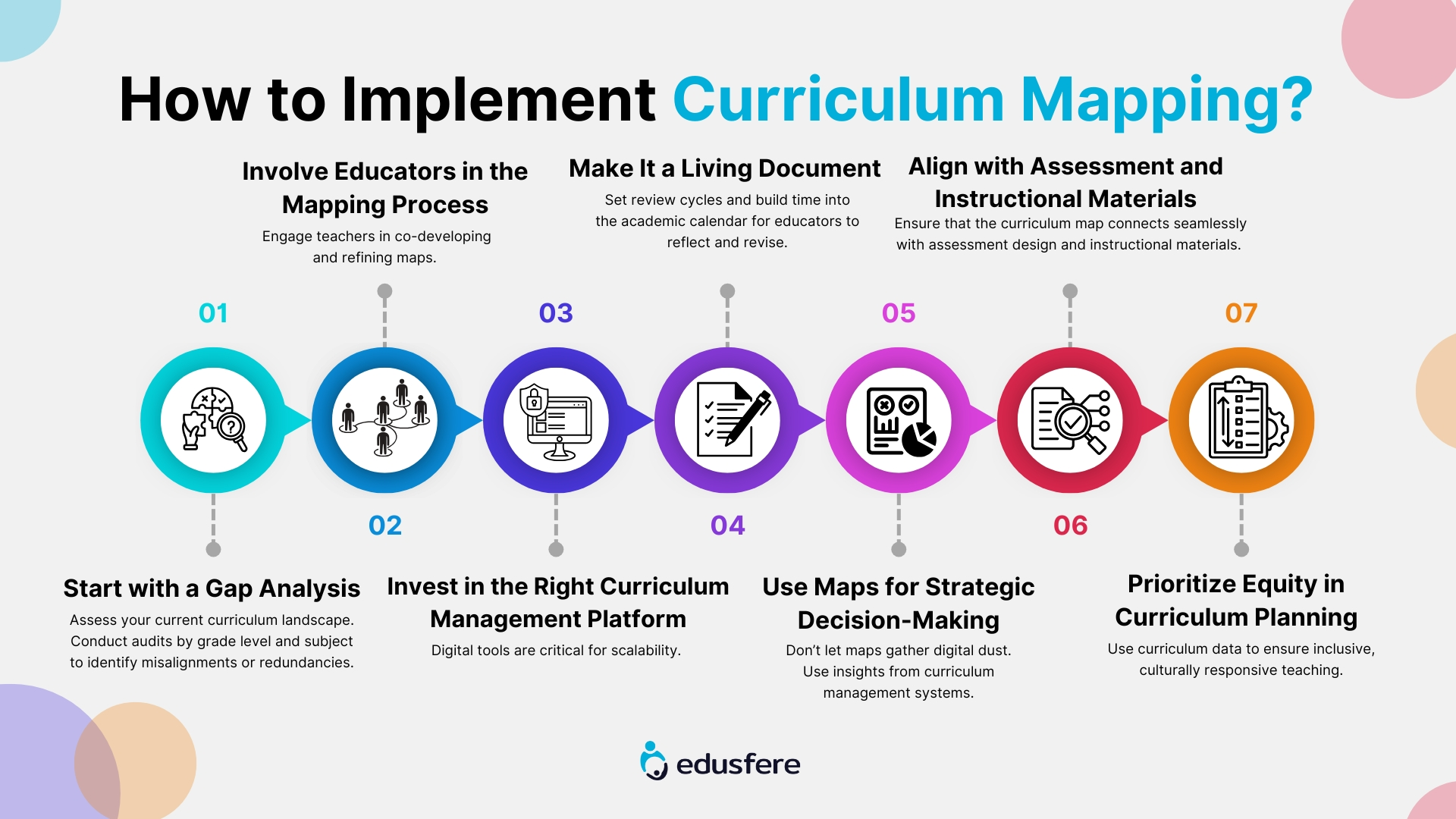Schedule a free demo to learn more
Curriculum Mapping in 2025: Why Schools Can’t Afford to Fall Behind?
23rd April 2025

The American education system is at a turning point. With emerging technologies, evolving state mandates and heightened expectations from parents and communities, curriculum mapping and delivery can no longer be static.
In 2025, school systems across the US are balancing multiple priorities: digital equity, learning loss recovery, personalized pathways and alignment with college and career readiness goals.
According to the National Center for Education Statistics (NCES), more than 90% of public schools now use digital tools to support instruction. However, the same report highlights a concerning trend: over 40% of educators say they lack visibility into how learning standards are being met across classrooms.
This disconnect reveals a bigger concern and that is the absence of robust curriculum mapping and curriculum management systems. As education leaders, it’s no longer enough to ask what is being taught; we must understand why, when and how, along with the ability to course-correct in real time.
How does Curriculum Mapping support Compliance, Learning Outcomes and Personalization?
At its core, curriculum mapping is a strategic process that documents and aligns what is taught (curriculum), how it is taught (instruction) and how learning is measured (assessment). It provides a living blueprint that helps educators, administrators and policymakers make data-driven decisions.
Here’s how Schools are leveraging Curriculum Mapping today:
1. Curriculum Mapping compliance with State and Federal Standards
With frequent shifts in standards like the Common Core, Next Generation Science Standards (NGSS) and local mandates, a digital curriculum management system ensures that changing standards have been incorporated into the curriculum. For instance, districts in Texas using curriculum mapping tools reported a 30% increase in TEKS alignment accuracy. This reduces compliance risks during audits and evaluations.
2. Boosting Student Outcomes through Vertical
Curriculum mapping allows districts to identify gaps and redundancies in instruction. Vertical alignment ensures that skills build logically year over year, while horizontal alignment ensures consistency across classrooms and schools. In Illinois, one district using a cloud-based Curriculum Mapping solution saw a 15% improvement in student performance on state reading assessments within two years.
3. Supporting Personalized Learning at Scale
Curriculum Mapping provides visibility into content coverage and instructional pacing, allowing educators to personalize interventions and enrichment. Schools that integrate curriculum maps with student performance data can tailor instruction more effectively.
For example, New Jersey schools using curriculum management platforms reported that teacher-led personalized pathways increased student engagement by 22% in blended classrooms.
Several US districts and charter networks are redefining what modern curriculum management looks like.
1. Fulton County Schools, Georgia
Faced with rapid growth and diverse student needs, Fulton County implemented a district-wide curriculum mapping platform. They centralized their scope and sequence, making real-time updates visible to all educators. The result? A 25% reduction in instructional overlap and more streamlined PD sessions.
2. High Tech High, California
Known for its project-based learning model, High Tech High uses curriculum mapping not just for compliance but for innovation. Teachers collaboratively build and revise maps to reflect interdisciplinary learning, integrating state standards with real-world applications.
3. Spring Branch ISD, Texas
This district adopted a dynamic curriculum management tool that tracks standards alignment, digital content usage and assessment performance. The platform’s analytics helped administrators identify gaps in math instruction across schools, leading to targeted coaching and curriculum updates.
Meanwhile, these examples underline one key truth: progressive schools see curriculum maps as a strategic asset, not just a documentation task.

Actionable Tips for Implementing It Now.
Whether you’re leading a district, advising on education policy, or driving curriculum change in your school, here’s how you can begin or improve curriculum mapping efforts in 2025:
1. Start with a Gap Analysis
Assess your current curriculum landscape. What’s documented? What’s missing? Are standards visibly mapped to units and assessments? Conduct audits by grade level and subject to identify misalignments or redundancies.
2. Involve Educators in the Mapping Process
Top-down mandates don’t work in education. Engage teachers in co-developing and refining maps. This not only improves map quality but increases buy-in. Consider forming PLCs (Professional Learning Communities) with cross-grade or cross-subject representation.
3. Invest in the Right Curriculum Management Platform
Digital tools are critical for scalability. Look for platforms that support:
- Standards alignment (state + national)
- Visual curriculum maps and timelines
- Real-time collaboration
- Data integration with LMS or SIS systems
Some widely adopted tools include Atlas by Rubicon, Chalk and Edusferes’ curriculum mapping module, each offering distinct features tailored to K-12 needs.
4. Make It a Living Document
Curriculum maps should evolve as standards, student needs, and instructional practices change. Set review cycles (quarterly or bi-annually), and build time into the academic calendar for educators to reflect and revise.
5. Use Maps for Strategic Decision-Making.
Don’t let maps gather digital dust. Use insights from curriculum management to:
- Identify professional development needs (e.g., gaps in inquiry-based science instruction)
- Allocate resources more effectively
- Improve instructional pacing across schools
- Inform board-level curriculum strategy
6. Align with Assessment and Instructional Materials
Ensure that the curriculum map connects seamlessly with assessment design and instructional materials. When the three are misaligned, students suffer. The goal here is to create a tightly knit system that functions as a continuous improvement loop.
7. Prioritize Equity in Curriculum Planning
Curriculum mapping can help surface inequities in content exposure. Are all students being taught high-rigor content? Are cultural perspectives fairly represented across subjects? Use curriculum data to ensure inclusive, culturally responsive teaching.
The Bottom Line
Curriculum mapping is no longer “nice to have.” In 2025, it’s a non-negotiable pillar of effective education systems. From ensuring compliance and improving student outcomes to enabling personalized learning, the benefits of strategic curriculum management are profound.
However, the existing state of strategic implementation of Curriculum management techniques is dismal. Schools that fail to modernize their curriculum practices risk widening achievement gaps, missing compliance targets and falling behind more agile school systems.
If you’re ready to future-proof your academic strategy, start with curriculum mapping.
Ready to build curriculum maps that drive results?
Discover how Edusfere’s all-in-one curriculum mapping and management platform can support your team, right from alignment to execution.
Book a demo session with Edusfere today!